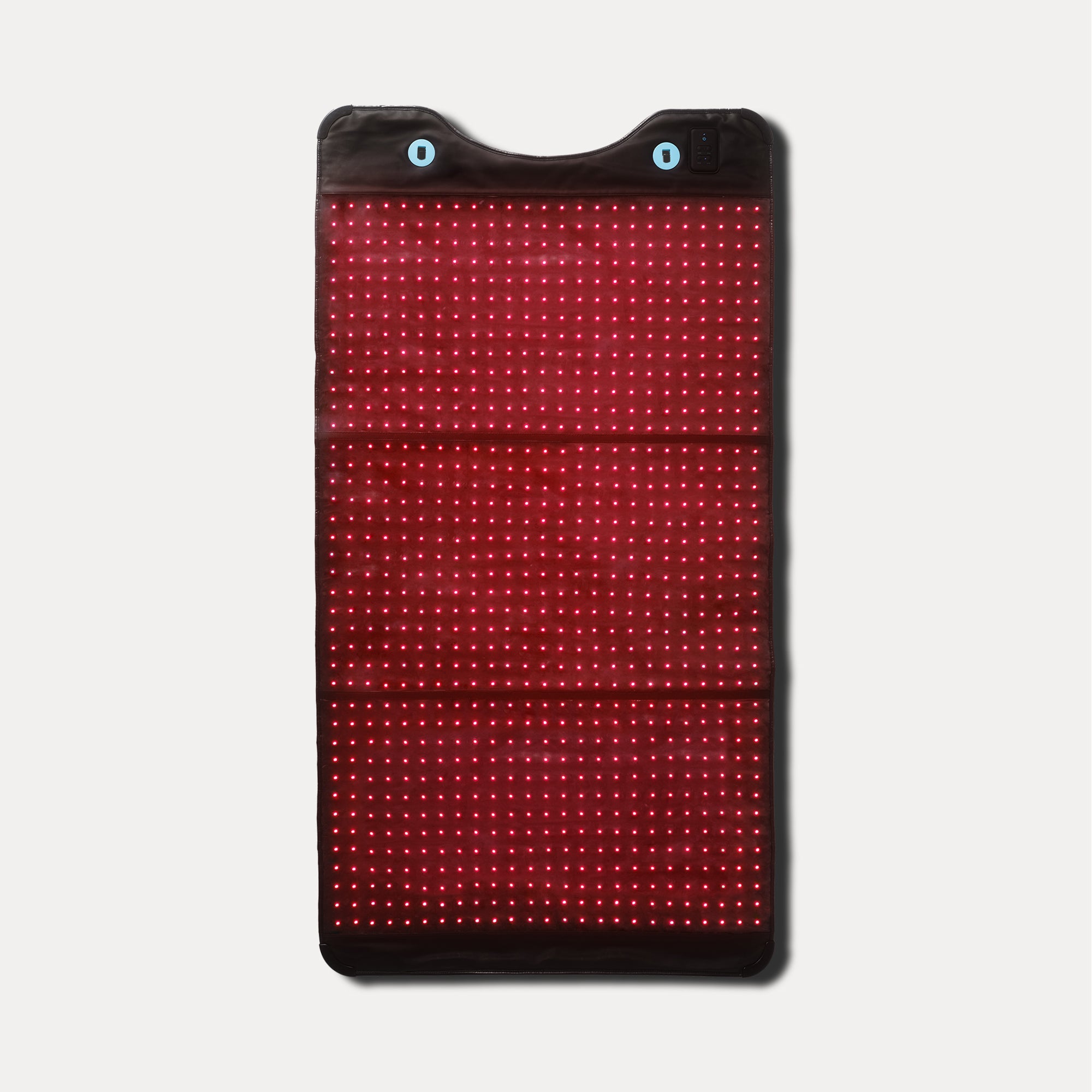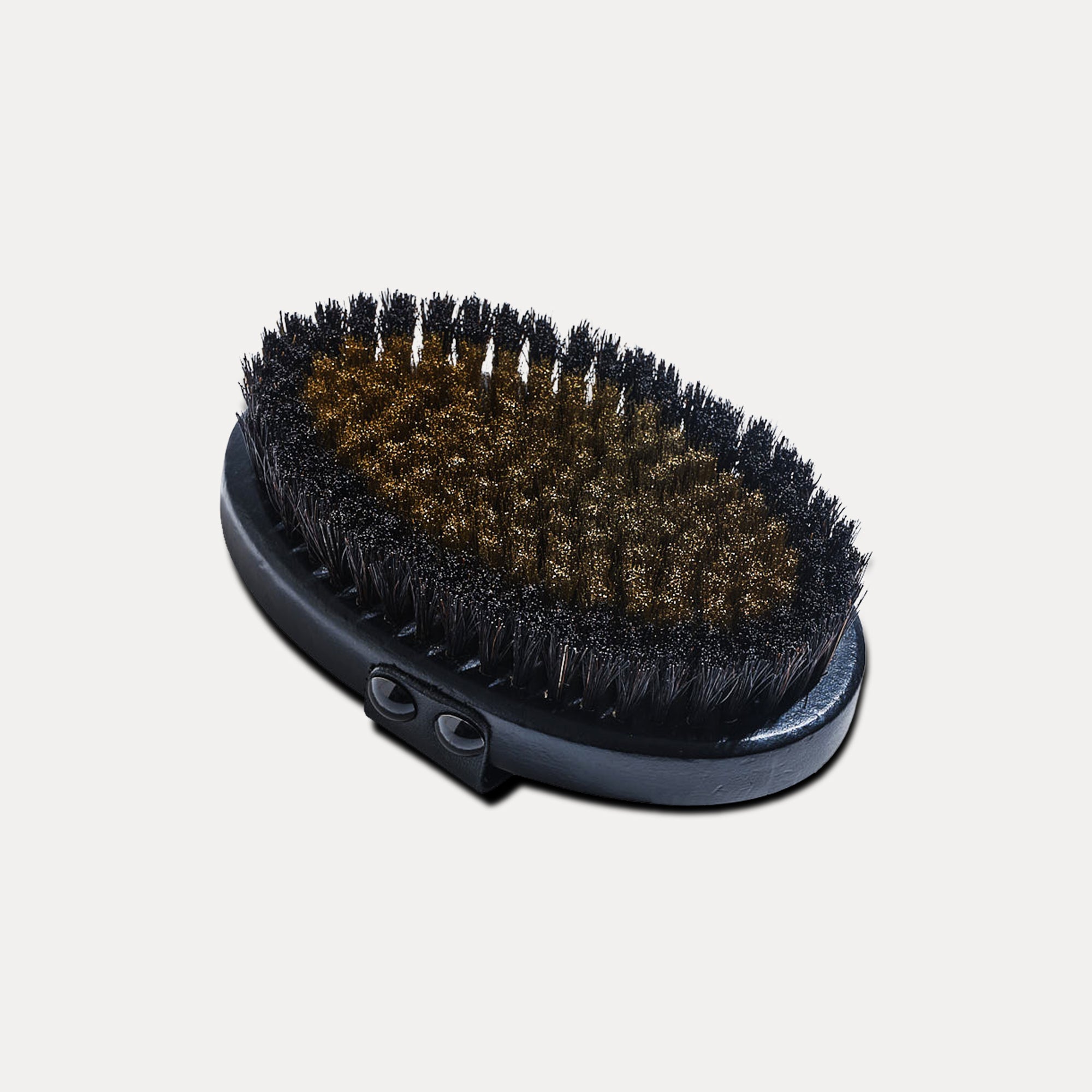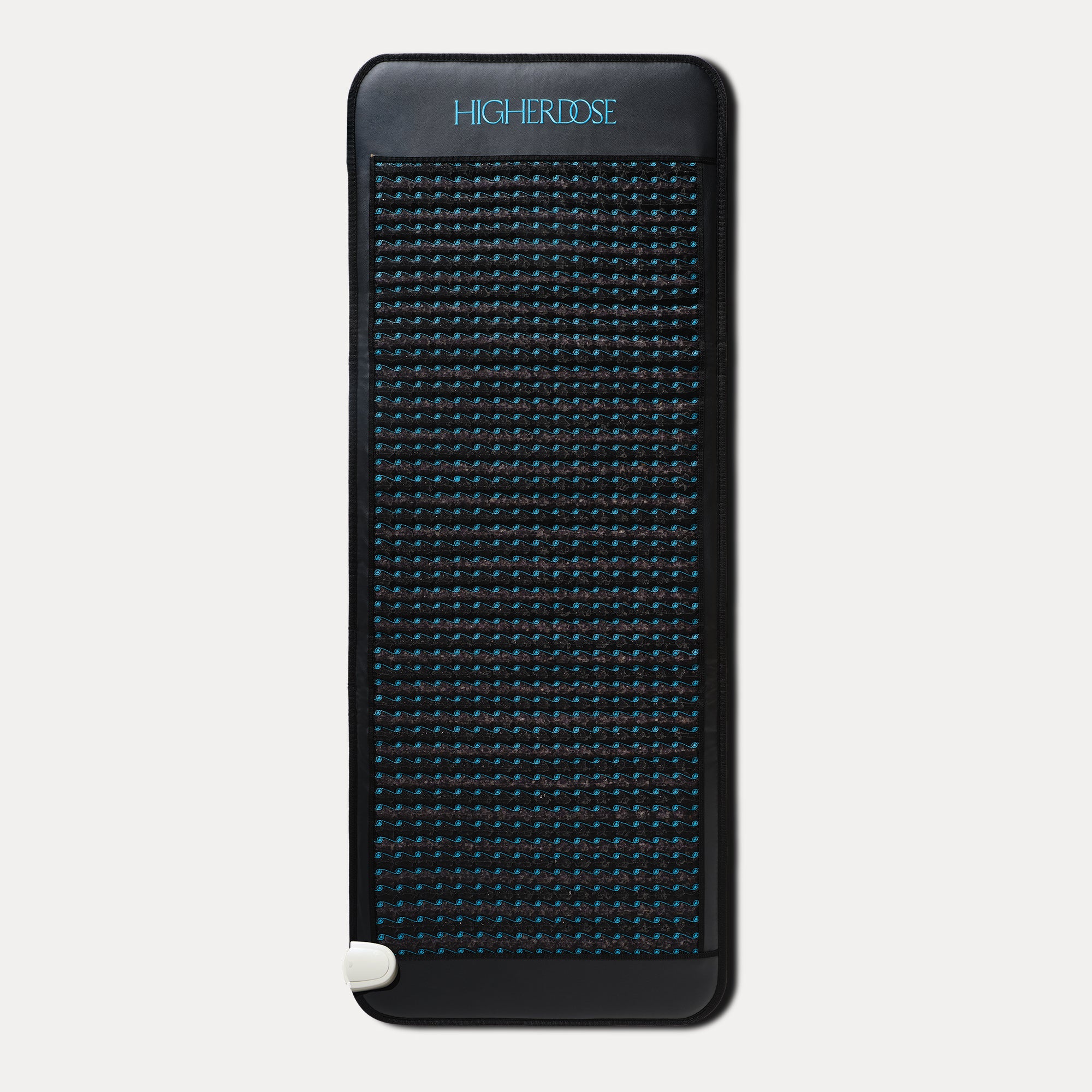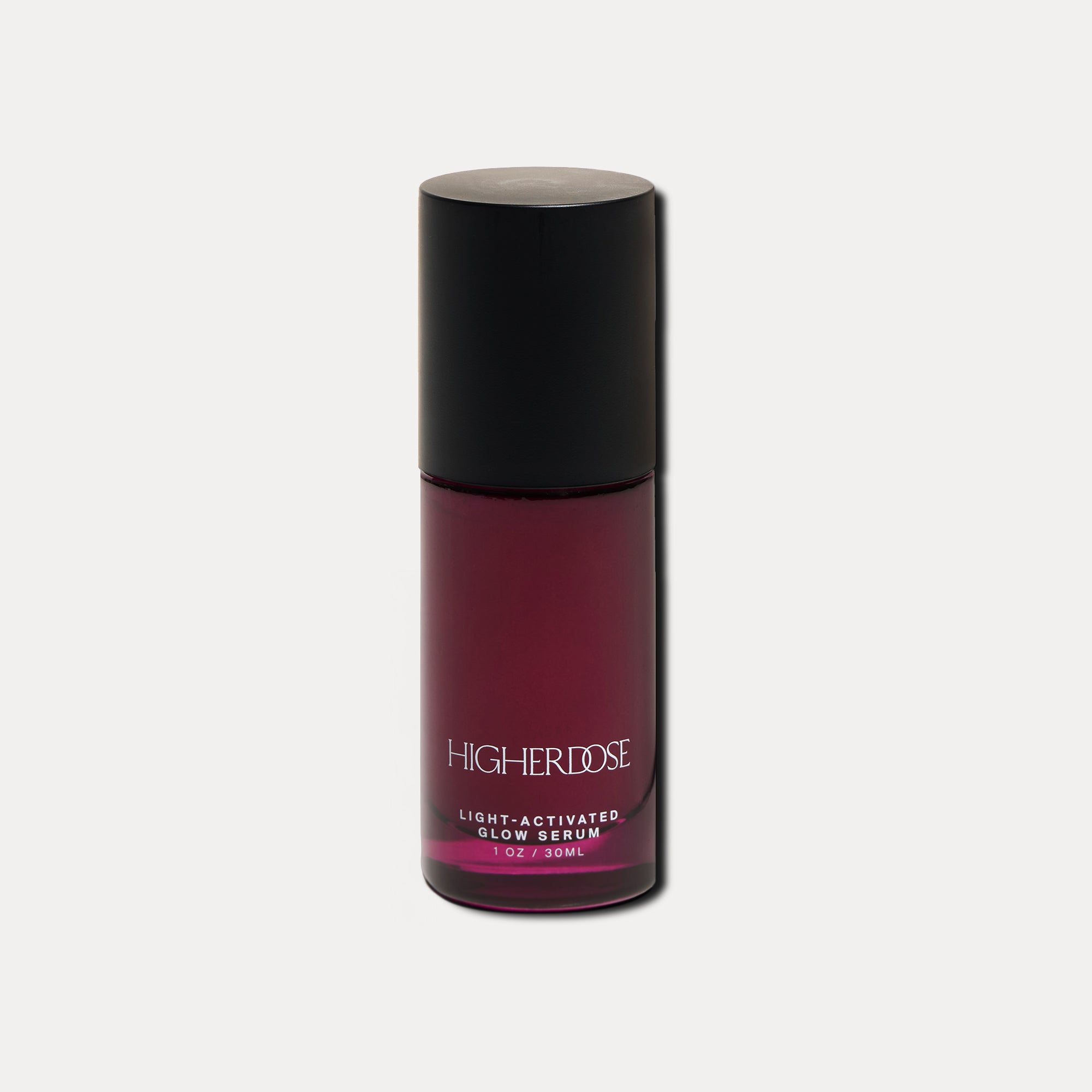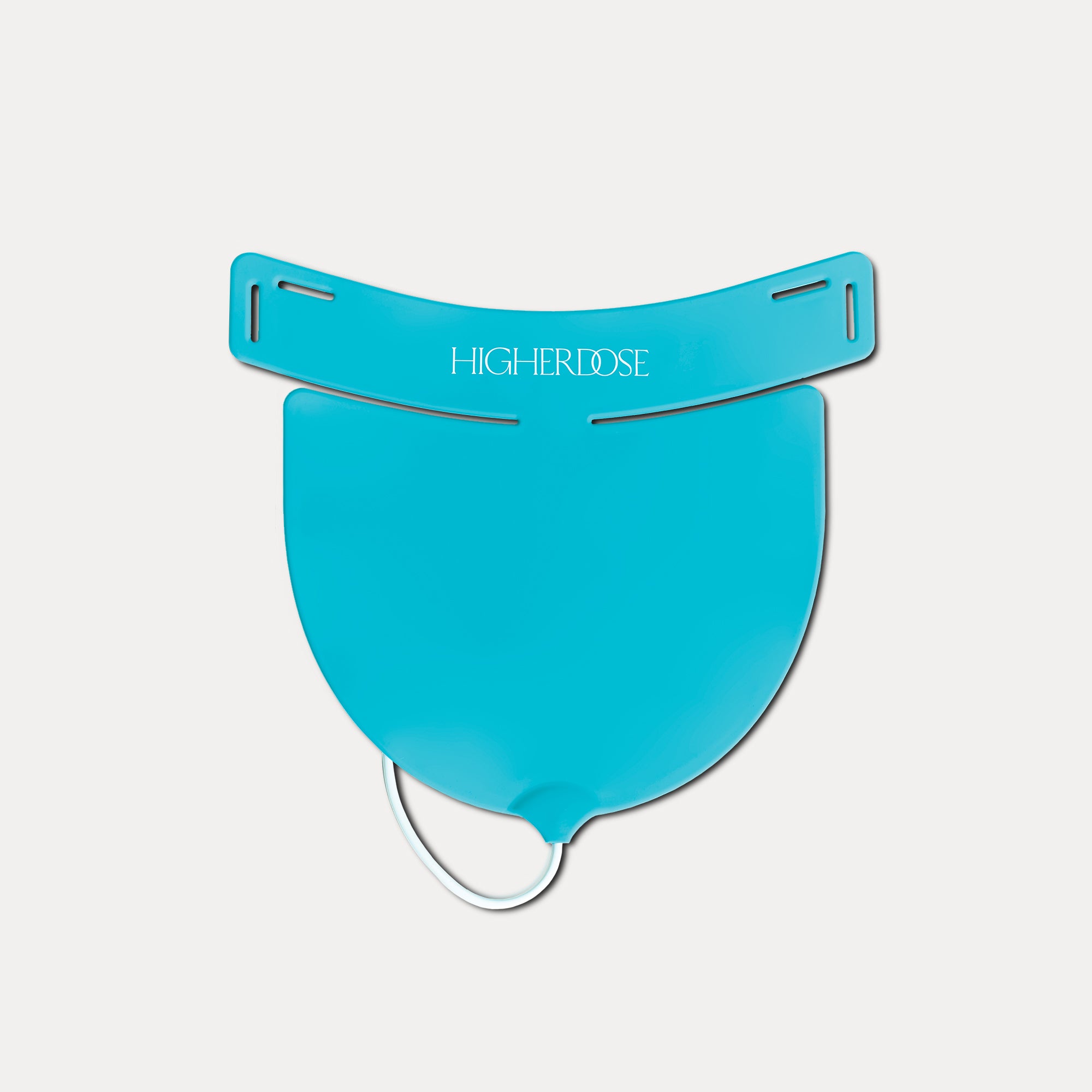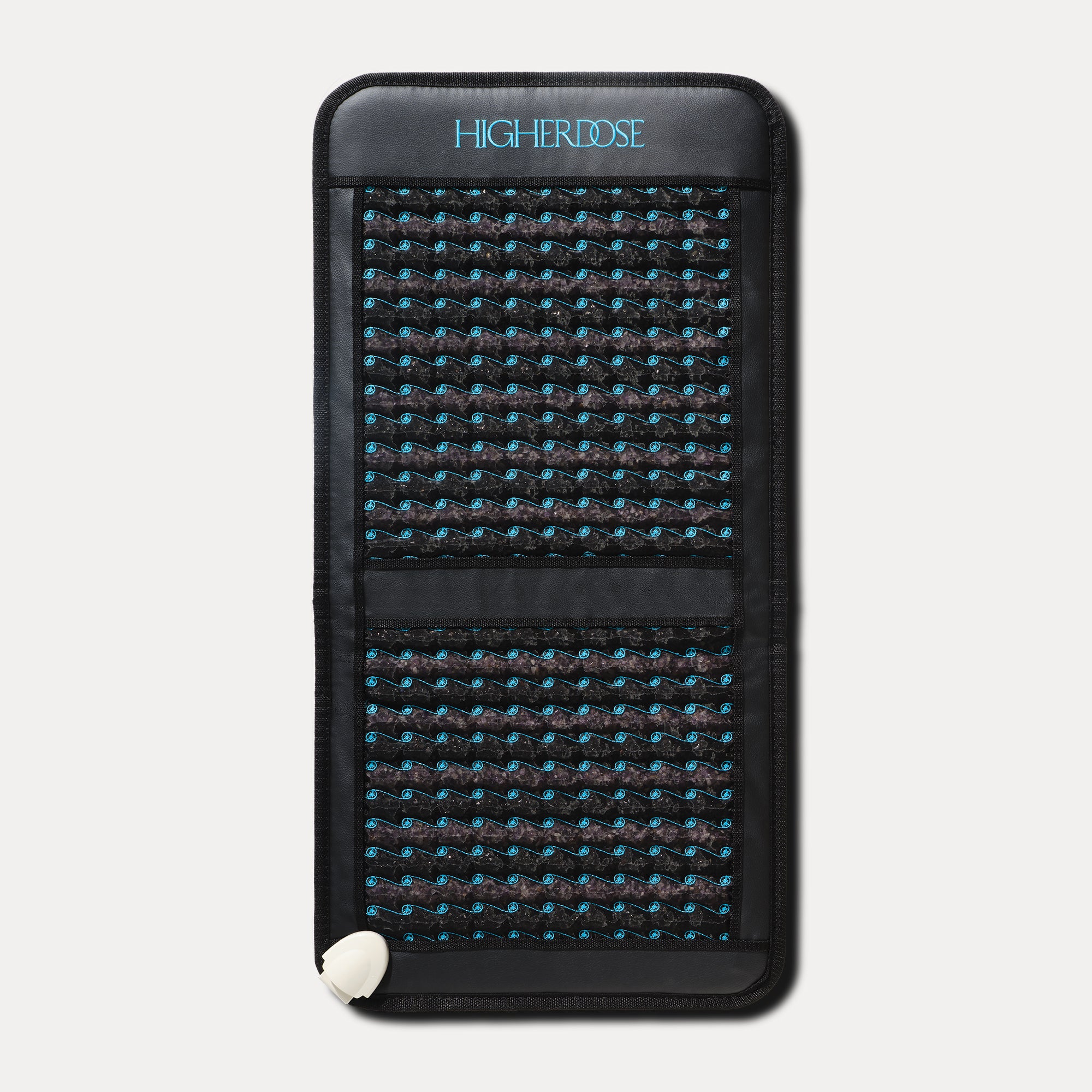
Fascia & Body Intelligence with Lo Roxburgh
Unlocking the Power of Fascia: A Deep Dive with Lauren Roxburgh
Lauren Roxburgh is a best-selling author, wellness educator, leader and inspirational speaker often dubbed “The Body Whisperer” and a contributor to Women’s Health Magazine, Goop, MindBodyGreen and other magazines and websites. Lo is regularly featured on some of the top global podcasts like Broken Brain, Ben Greenfield, Be Well By Kelly, The Genius Life and many more. The go-to writer and expert on all things holistic body care, fascia, alignment, emotional health and movement medicine, Lo works with Hollywood’s A-List as well as some of the greatest athletes and surgeons on the planet. Named the “Body Alignment Pro” by Vogue, Lauren is also the founder of the virtual Aligned Life Studio wellness platform and the creator of the Aligned Body Collection of tools.
For the HigherDOSE Community
To get a taste of Lauren’s method, try her Hero 5 Minute Fascia Flow for FREE here. Lauren has also set up an exclusive 30% discount on membership of her Aligned Life Studio, her holistic online wellness Studio with hundreds of video workouts and healing sequences that will help you lose weight, align your posture, decrease pain and ditch stress while boosting confidence and getting gorgeous glowing skin. Just use the code HIGHER30 at checkout to get 30% off your membership.
You can also read more about her at: www.laurenroxburgh.com
Can You Share Your Personal Journey Into The World Of Fascia And Body Alignment? How Did You First Discover Fascia As Your Focus?
My journey into the world of fascia began with a deep desire to understand true healing. When I was 16, my mother was diagnosed with cancer, and it cracked open my world. That moment ignited a curiosity about the body - what helps it thrive, what causes disease (or dis-ease), and how stress and emotions become woven into our tissues.
I was an All-American swimmer so I had a real interest in health and fitness, but witnessing my mother’s health battle I was motivated to study nutrition and exercise physiology at university so I could understand more about how we could optimize our health and wellbeing. After university I became a Pilates instructor, and later trained in Structural Integration, which is a fascia-focused bodywork method. That’s when I really started to learn all about fascia. But it wasn’t just learning anatomy - it was also about learning how energy, memory, frequency and even emotion affect us and our health. I saw firsthand how working with fascia could realign posture, shift energy, release trauma, and awaken something deeply intuitive in people.
That’s when I really began to realize that fascia isn’t just connective tissue - it’s actually a quantum portal to healing and embodiment. I’ve spent the last two decades helping people unlock this forgotten framework and return home to their bodies. What I’ve come to realize is that most people are trying to change their outer world - when the real transformation begins when they learn to shift their inner world. And fascia is the gateway to do that.
How Would You Describe Fascia? What’s The Difference Between Fascia, Muscle, And Skin?
Fascia is a thin, web-like layer of connective tissue that wraps around every muscle, bone, organ, and nerve in your body. If you’ve ever seen the white stringy layer when you cut into an uncooked chicken, that is fascia. Think of it as your body’s internal scaffolding, holding everything in place while allowing you to move, stretch, and flow.
But fascia is more than just a structural support system. It’s also a sensory organ and a communication matrix that encases and weaves through every cell of your body, every muscle, bone, organ, nerve, node and gland. While the skin protects and the muscles power movement, fascia gives you structure and shape. More importantly, it is also packed with nerves that communicate with your brain. It transmits signals about pain, tension, movement, and even emotions.
When your fascia is healthy, it’s hydrated, elastic, and free-flowing, allowing your body to move with ease and transmitting information throughout your body efficiently. Healthy fascia also helps us regulate nearly everything in our bodies - posture, mood, immunity, hormonal balance, digestion, emotional processing and even our capacity to experience pleasure, joy, and connection.
But when it becomes tight, dry, or restricted - often due to injuries, stress, lack of movement, or trauma - it can lead to stiffness, pain, and even emotional blockages.

We Believe Fascia Is The Missing Link In Modern Body Care. What Do You Think We’ve Misunderstood About How The Body Holds Tension, Energy, And Emotion?
For a long time fascia was largely overlooked by the scientific community. Doctors would just discard fascia when studying anatomy. Ida Rolf, a scientist born in 1896, was one of the first to recognize the power of fascia. Driven by her own health challenges, she explored many healing modalities and realized they all had one thing in common: they worked by improving alignment and freeing up the body’s connective tissue. She developed Structural Integration (also known as Rolfing), which is a method of hands-on bodywork that focuses on releasing and realigning fascia to restore balance and ease.
Rolf’s work showed that when fascia is tight or tangled, it can pull the body out of alignment, causing pain, stiffness, and even emotional distress. By freeing the fascia, she saw people stand taller, move more gracefully, and feel more at home in their bodies. She also noticed that emotional states seemed to be reflected in the fascia - stress and trauma could make it hard and dense, while joy and relaxation made it supple and free.
For decades, Rolf’s ideas were considered radical. But in 2007, the first International Fascia Research Congress brought together scientists, doctors, and bodyworkers from around the world. Suddenly fascia was in the spotlight, and with the benefit of new technology that allowed scientists and doctors to study fascia in living bodies, it was finally recognized as a vital organ that influences everything from posture to immunity to emotional health.
But this science is new - as is the technology, such as the cameras that have allowed scientists to study fascia in living bodies - and the conventional medical establishment is still slow to embrace the role of fascia in our health. Fascia doesn’t show up clearly on standard imaging like X-rays, and even MRIs struggle to capture its full complexity. Fascia also doesn’t respond to pharmaceuticals or surgery in the way muscles or organs might. But it does respond profoundly to light, sound, breath, movement, nature, emotion, and energetic presence. When fascia is hydrated, elastic, and open, it becomes a portal to vitality and radiance. But when it’s dry, restricted, or congested due to trauma, chronic stress, inflammation, or disuse, it can create stagnation on every level: physical, emotional, and energetic.
We’ve been conditioned to view the body as a machine, something to push, fix, or control. But the body is not mechanical - it’s a sensing, feeling, vibrating ecosystem. And fascia is the conductor of that internal symphony.
What we’ve missed is that the body doesn’t just store physical tension it holds emotional tension, too. And that is actually held in the fascia. Fascia remembers everything: trauma, heartbreak, burnout, even unspoken grief. These experiences embed in the tissue, shaping our posture, our energy, and even how we show up in the world.
When we work with fascia, we don’t just become more flexible, we become more free. Free to feel. Free to express. Free to let go. I’ve seen this first hand with literally thousands of clients who often have physical and emotional breakthroughs when they heal their fascia.
I believe fascia is the bridge between the structural and the emotional, the physical and the energetic, the visible and the unseen. That’s why it’s such a potent missing piece in the conversation about wellness and embodiment.
How Does Fascia Health Influence The Lymphatic System And Detoxification? Why Does Moving Fascia Help Move Stagnant Fluids, Waste, And Even Emotions?
Fascia wraps around the lymph nodes and vessels and actually acts as the pump for the lymphatic system. When fascia becomes congested, thick, dehydrated or stiff, it restricts the lymphatic vessels that run through it, making it difficult for the lymphatic system to do its job. Because the lymphatic system is responsible for detoxification, immune function, and waste removal, this stagnation can lead to inflammation, fatigue, and a buildup of toxins and emotional residue.
When we smooth and hydrate the fascia - through foam rolling, stretching, bouncing, shaking, spiraling, rhythmic movement, and even sound healing - we activate a natural pumping mechanism that stimulates lymph flow. This clears stagnation, flushes toxins, and helps release stored emotions.
Fascia is incredibly responsive to pressure, vibration, breath, and frequency, which is why even a short fascia-focused practice can boost circulation, elevate your mood, and support your overall immunity. I’ve developed a series of signature Fascia Flows (aka the Lo Flow) that help to keep the fascia healthy in as little as 5 minutes a day. I often describe it as tissue hygiene, like brushing your teeth, but for your entire physical and energetic body.

How Does Fascia Store Emotion And Energy? Can Releasing Tight Tissue Really Change How We Feel?
Releasing tight tissues can absolutely change how we feel! Fascia is deeply connected to the nervous system and rich in sensory receptors. It registers and stores emotional experiences, especially those we haven’t fully processed. When you release fascial restrictions or adhesions, particularly in emotionally sensitive areas like the hips, jaw, heart, and belly, you often also release the energy or emotions that have been trapped there.
That’s why people cry, tremble, shake, laugh, cough, hum, sigh, or feel a wave of clarity during fascia work. It’s not just tension being released. It's a story being completed. I’ve witnessed profound transformations in people, not just physically, but emotionally and spiritually - simply by releasing what they’ve been holding in their tissues. It’s sacred, liberating work. It often has benefits far beyond just the physical - as I say, when you align your body, you align your life.
You’ve Said It’s Not Necessary To Lift Heavy Weights To Be Strong, Toned, And Connected. What’s Your Approach To Sculpting From A Place Of Nourishment And Hydration?
Strength isn’t just about force, it’s also about function, flow, connection and fluidity. My method focuses on intuitive, elongating, decompressive spiraling movements that work with the body’s natural patterns and use our own bodyweight to provide the resistance we need to build strength and tone. I often say: we’re not fighting gravity, we’re learning to flow with it.
I use a foam roller and some other simple tools that I’ve developed (available here) to mimic moves from disciplines like Pilates and yoga which help strengthen and tone the muscles (including those hard to reach intrinsic muscles). The bodyweight exercises we do in the Fascia Flows and other workouts inside my Studio also build strength in the larger muscle groups while nourishing the fascia at the same time.
When we nourish fascia with breath, circulation, connection and alignment, we sculpt from the inside out. We build intelligent strength, supported by emotional resilience and energetic alignment.
The result? A body that feels lighter, more responsive, more radiant - and fully alive.

What Are Some Daily Rituals You Practice To Keep Your Fascia Hydrated And Your Energy Flowing?
It’s always about quality over quantity and presence over perfection. My day begins with my 5-Minute Fascia Flow - a simple yet potent way to wake up the tissues, activate lymph, and center my energy.
Throughout the day, I integrate dry brushing, infrared sauna, red light therapy, foam rolling, rebounding, sound healing, and fascia combing. These rituals keep my fascia hydrated and my frequency high. Like many of us, my days are pretty busy with family, work, filming and life so I’m a big fan of fitting in movement whenever I can. I call it “movement snacks”. I might do a fascia flow in the afternoon or jump on my rebounder or foam roller for 5 minutes in the middle of the afternoon when I notice my energy lagging. There’s new evidence that doing short bursts of exercise throughout the day can be incredibly effective.
In the evening, I unwind with my Body Sphere, a warm magnesium bath, and breathwork or sound to recalibrate my nervous system. These practices are how I return to myself. They’re not routines - they’re rituals of remembrance.
How Can People Begin Integrating Fascia-Focused Movement Into Their Routine - Even With Just 10 Minutes A Day?
Start small. Fascia responds more to consistency and intention than to intensity. That’s exactly why I created my free 5-Minute Fascia Flow - so anyone, anywhere can start reconnecting to their body in just a few minutes a day.
You don’t need fancy equipment or a full hour. Five to ten minutes of fascia-focused movement daily can change your state, improve circulation, flush toxins, and reset your nervous system. Over time, this simple commitment builds strength, softness, and deep trust in your body’s intelligence.
The 5 Minute Fascia Flow is easy to fit into your day - do it when you get up (like I do) to kickstart your day, go outside and do it after lunch or do it as a wind down before bed. You can even repeat it once or twice during the day. It’s the perfect “movement snack” and given the largely sedentary lives so many people are living, that is the type of snacking we all need to be doing more of in our days.
You’ve Built A Global Platform Around Body Intelligence. How Do You Define That Concept, And How Did It Emerge In Your Own Healing Journey?
Body Intelligence is the innate wisdom that lives inside us all. It’s the knowing that beats your heart, breathes your lungs and guides your intuition. And it lives in the fascia - so when we heal our fascia we also help to awaken our Body Intelligence.
In this world that is increasingly dominated by Artificial Intelligence, our Body Intelligence is the one thing we have that no computer will ever be able to replicate or replace. For me, Body Intelligence became my inner compass or GPS system when external systems failed. I was going through a marriage breakup at the same time as my mother was dying of cancer (which had returned after a long relapse) and my business manager had embezzled me. It was a perfect storm and to get through this difficult period I realized I had to stop outsourcing answers and start insourcing wisdom. It was through fascia work, breath, embodiment, and presence that I began to trust the quiet language of my body again. That’s when everything changed.
Now, Body Intelligence is the foundation of my work and my life.

What Does It Truly Mean To Live In Tune With Your Body Intelligence?
It means living in tune with the signals your body is sending you and awakening your intuitive superpowers. People with high Body Intelligence don’t just read words, they read energy. They are acutely attuned to the needs of their body and they can also read moods, body language, patterns, vibes and frequency. They move with clarity and alignment and they radiate authenticity.
Living in tune with your Body Intelligence brings enhanced well-being, deeper pleasure, emotional resilience, a more balanced body weight, and a joyful sense of lightness in your body and life. It helps you release emotional baggage, reset your frequency, and become magnetic to what your heart truly desires.
In a world that rewards busyness and disconnection, reclaiming your Body Intelligence is revolutionary. You become an “energetic activist”, raising your own vibration and, by doing so, raising the collective too.

